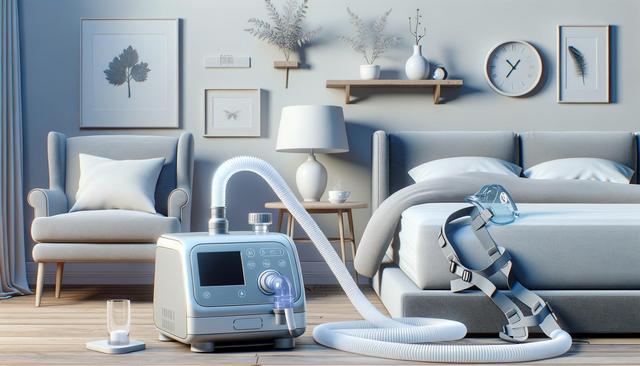Understanding At-Home Sleep Apnea Testing
Sleep apnea is a common but often undiagnosed condition that can significantly affect an individual’s quality of life. Traditionally, diagnosing sleep apnea required an overnight stay at a sleep clinic. However, recent advancements in technology have made it possible to conduct sleep studies from the comfort of home. This method, commonly referred to as At-Home Sleep Disorder Diagnosis, uses Home Sleep Apnea Testing Kits to gather data on a person’s sleep patterns, breathing, and oxygen levels. These tools are designed to be user-friendly, making them accessible to a broader audience, especially those who may be hesitant or unable to attend in-lab sleep studies.
Most at-home tests are designed to detect obstructive sleep apnea, the most prevalent form of the condition. The kits typically include a small portable device that monitors breathing patterns, heart rate, and oxygen saturation throughout the night. While these tests may not capture as much data as in-lab studies, they are often sufficient for initial diagnosis and can be a crucial first step toward effective treatment.
How Home Sleep Apnea Testing Kits Work
Home Sleep Apnea Testing Kits are compact and easy to use, allowing patients to set them up without medical supervision. These Portable Sleep Study Devices usually include components such as:
- A nasal cannula to measure airflow
- A chest strap to monitor breathing effort
- A pulse oximeter for tracking blood oxygen levels
- An optional microphone to record snoring
The setup process is straightforward. Users receive the kit by mail or pick it up from a healthcare provider. Instructions are typically included, and some providers also offer video tutorials or phone support. Once the device is worn overnight, the data is either uploaded electronically or returned to the provider for analysis. This process enables a Sleep Apnea Test Without Doctor Visit, making it a practical solution for people with tight schedules or limited access to sleep clinics.
Accuracy can depend on the quality of the device and how well the patient follows the instructions. While not a complete substitute for polysomnography (the gold standard for sleep studies), these devices offer a reliable starting point for many individuals.
Benefits of At-Home Sleep Apnea Tests
Opting for an at-home test offers several advantages. The most notable benefit is convenience—individuals can sleep in their own bed, in a familiar environment, which often results in more natural sleep patterns. In addition, these tests are generally more affordable than lab-based studies, making them accessible to a larger group of people.
Additional benefits include:
- Reduced waiting times for testing and diagnosis
- Minimized travel and time off work
- Discreet and private testing experience
- Increased comfort leading to potentially better sleep data
Furthermore, many of these tests are FDA Approved Home Sleep Tests, which means they meet safety and efficacy standards. This adds a level of assurance for users concerned about the reliability of the results. These tests are also a suitable option for ongoing monitoring of known sleep apnea cases, especially when adjustments in treatment are being considered.
Cost Considerations and Insurance Coverage
The Cost of Home Sleep Apnea Tests can vary depending on the provider, the complexity of the device, and the services included, such as data analysis or follow-up consultations. On average, these tests are significantly less expensive than in-lab studies, which can cost several times more due to the need for overnight staffing and equipment.
In many cases, health insurance plans cover at-home sleep apnea testing, especially when recommended by a healthcare provider. It’s essential to check with your insurance provider to understand what is covered and whether pre-authorization is required. Some diagnostic companies also offer payment plans or discounts for uninsured patients, helping to make the process more accessible.
For those paying out of pocket, comparing prices and services offered by different providers can be beneficial. Some may offer bundled packages that include the test, analysis, and consultation, providing better value overall.
What to Expect After the Test
After completing an at-home sleep apnea test, users typically receive their results within a few days to a week. The data is reviewed by a sleep specialist or a qualified healthcare provider, who will determine whether sleep apnea or another sleep disorder is present. If a diagnosis is made, treatment options may include lifestyle changes, continuous positive airway pressure (CPAP) therapy, or other interventions.
Some providers include a follow-up telehealth consultation to discuss the results and next steps. This approach continues the convenience of a Sleep Apnea Test Without Doctor Visit by allowing remote diagnosis and care planning. In cases where results are inconclusive or symptoms suggest a more complex sleep disorder, an in-lab study may still be recommended for further evaluation.
It’s important for individuals to be proactive about their sleep health. Early diagnosis and intervention can reduce the risk of complications such as cardiovascular issues, daytime fatigue, and decreased overall well-being.
Conclusion: A Practical Path to Better Sleep Health
For individuals experiencing symptoms such as loud snoring, daytime sleepiness, or pauses in breathing during sleep, at-home sleep apnea tests offer a practical, accessible solution. With the increasing availability of Portable Sleep Study Devices and FDA Approved Home Sleep Tests, more people are able to take control of their sleep health without the barriers of traditional clinic-based diagnostics. Whether motivated by convenience, cost, or comfort, these tools provide a valuable first step in identifying and managing sleep apnea.




Leave a Reply